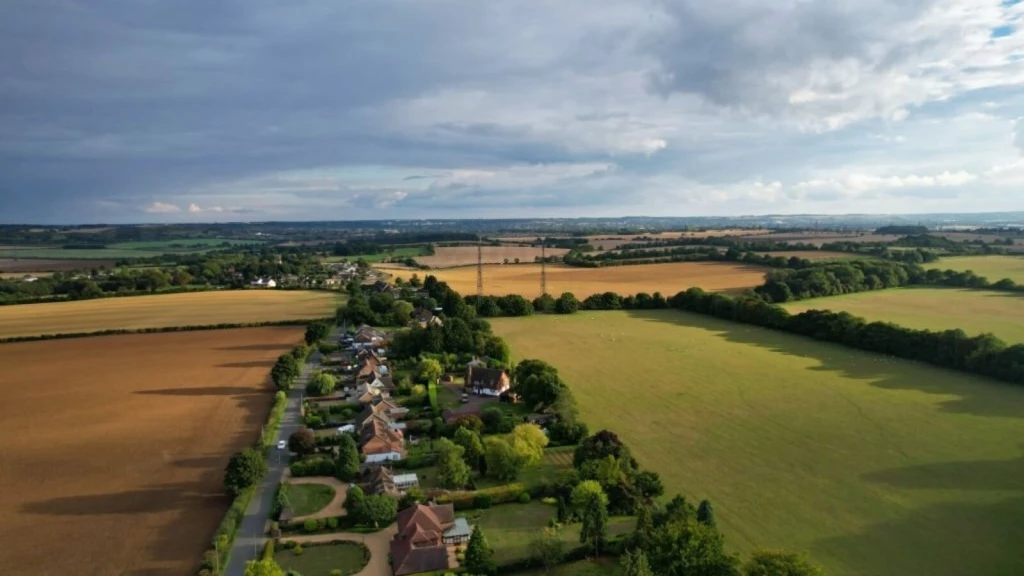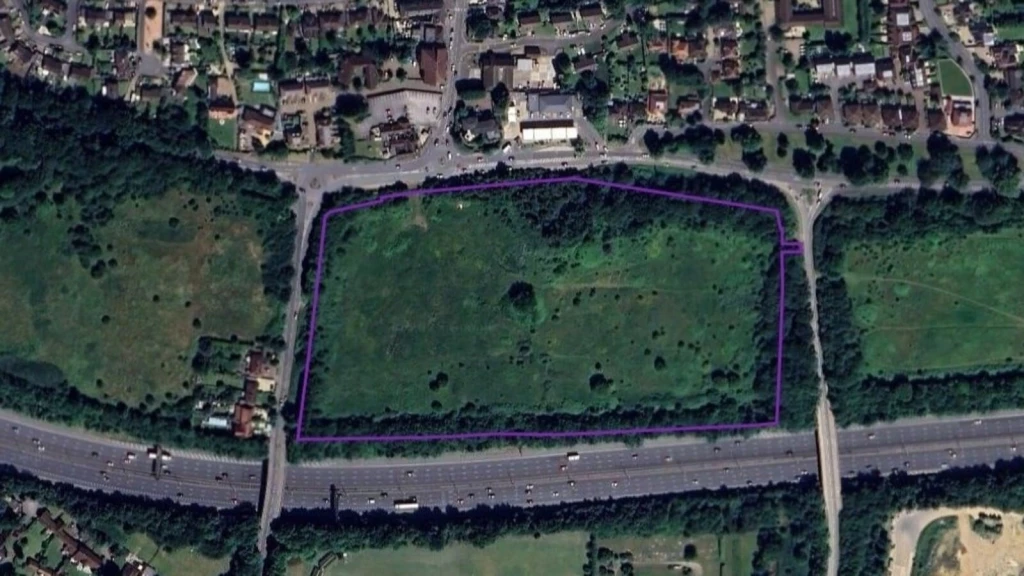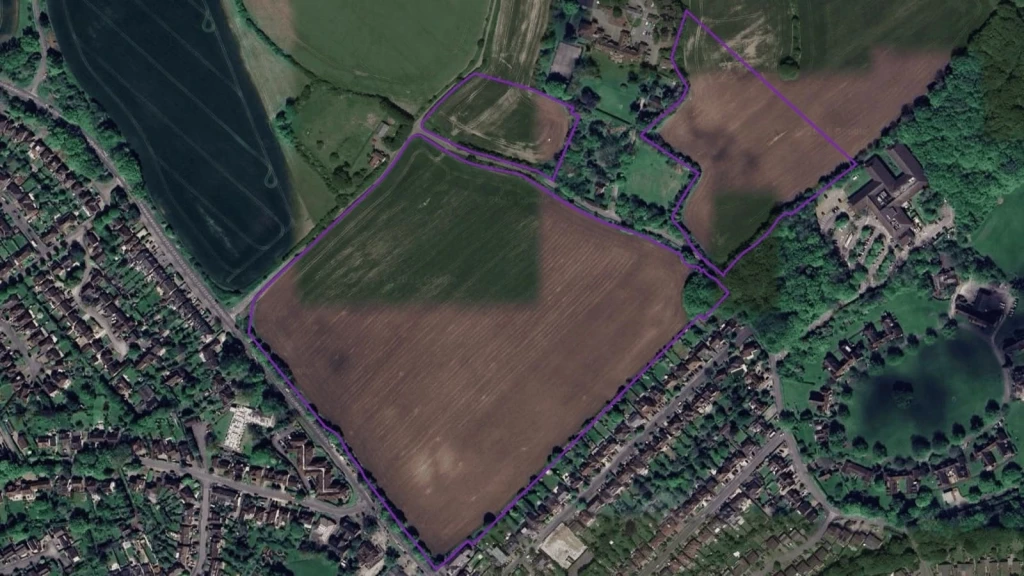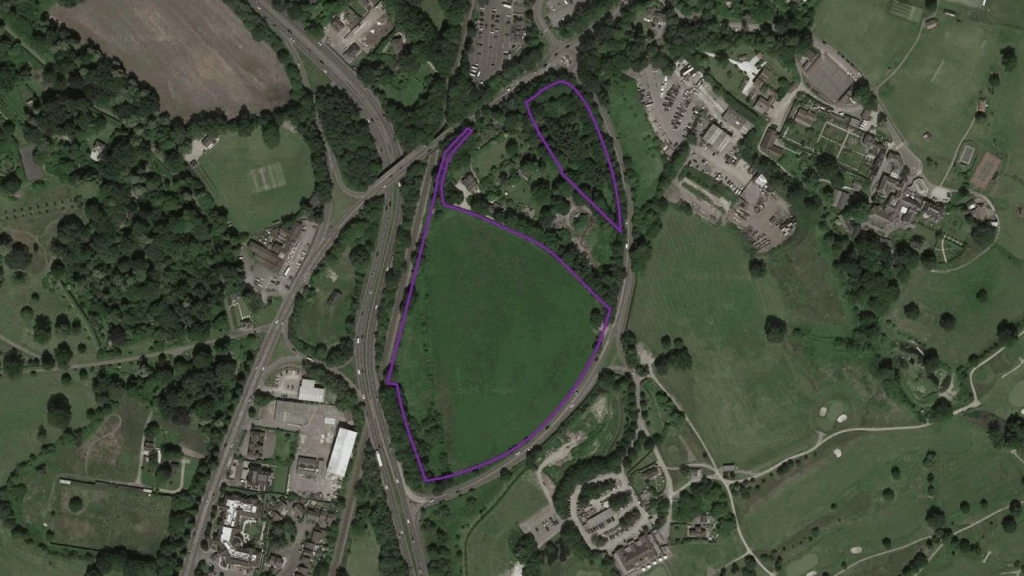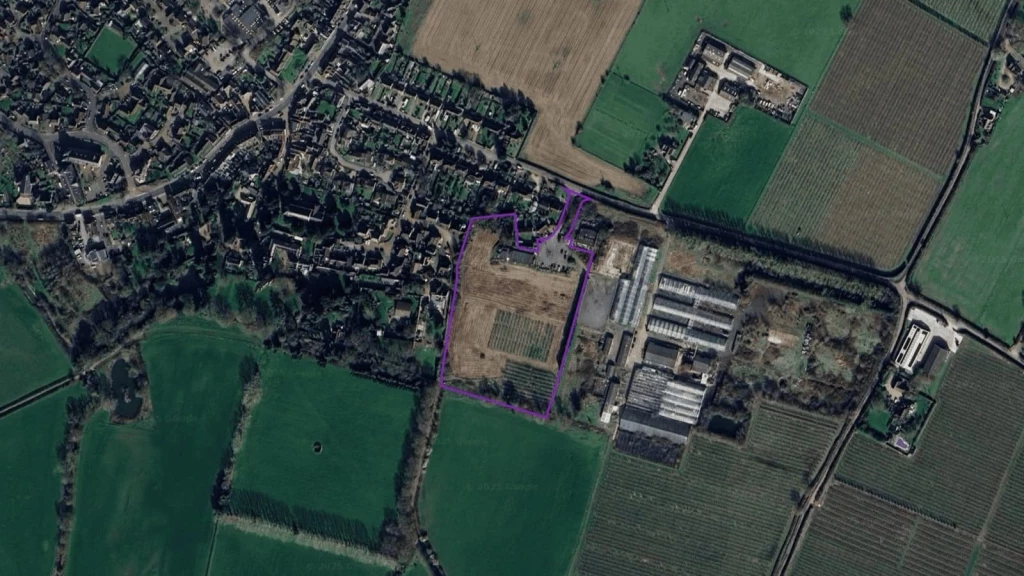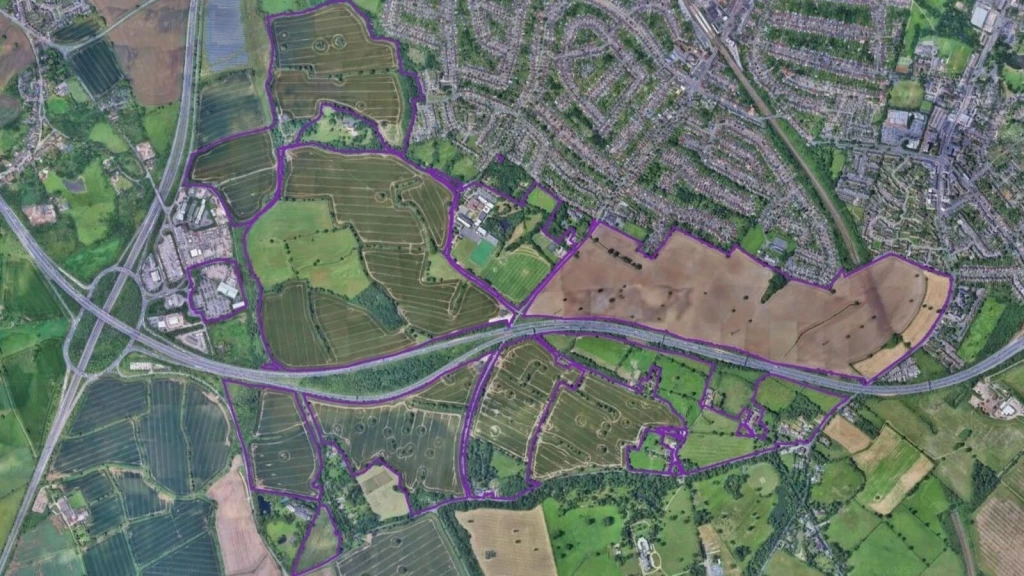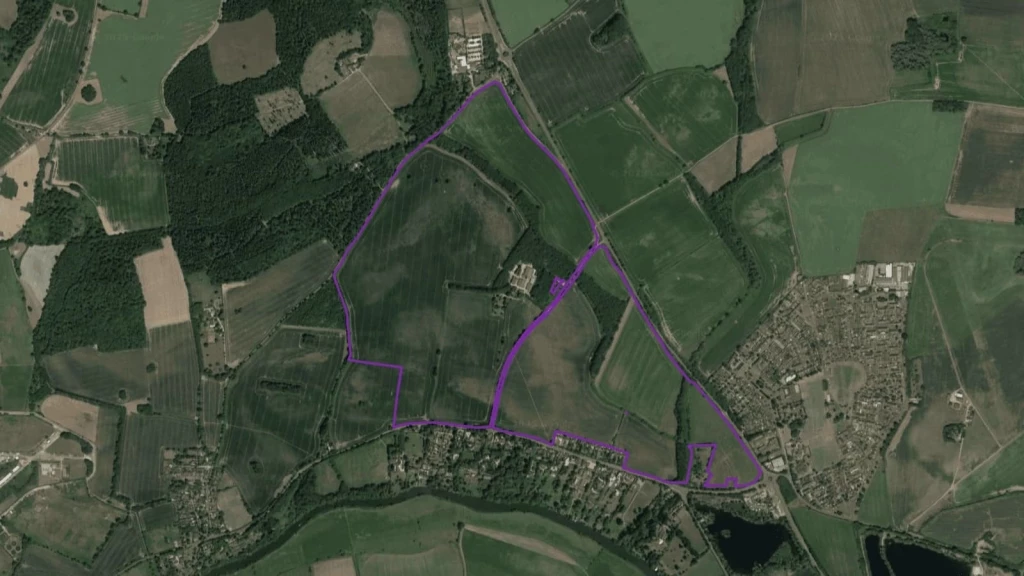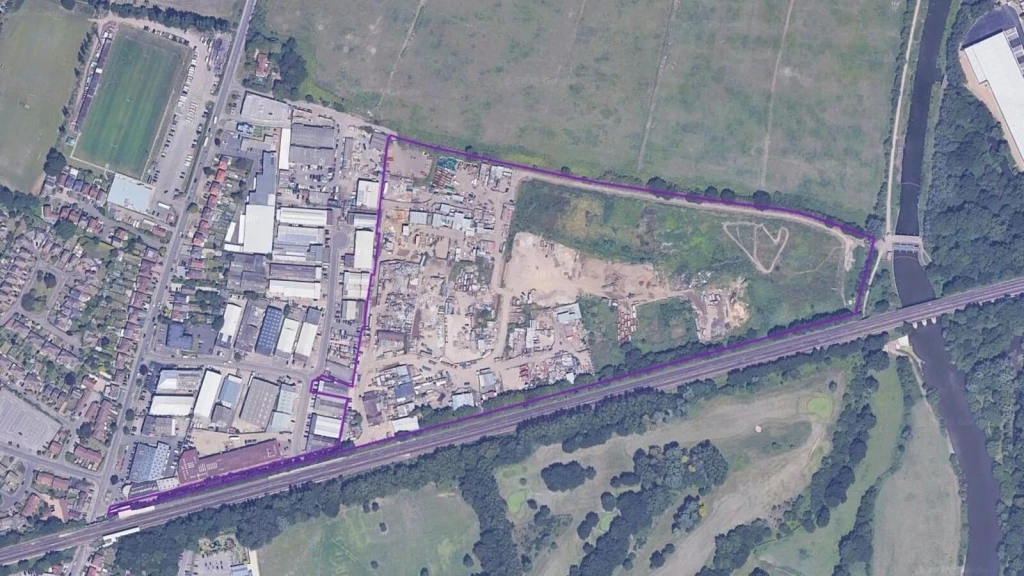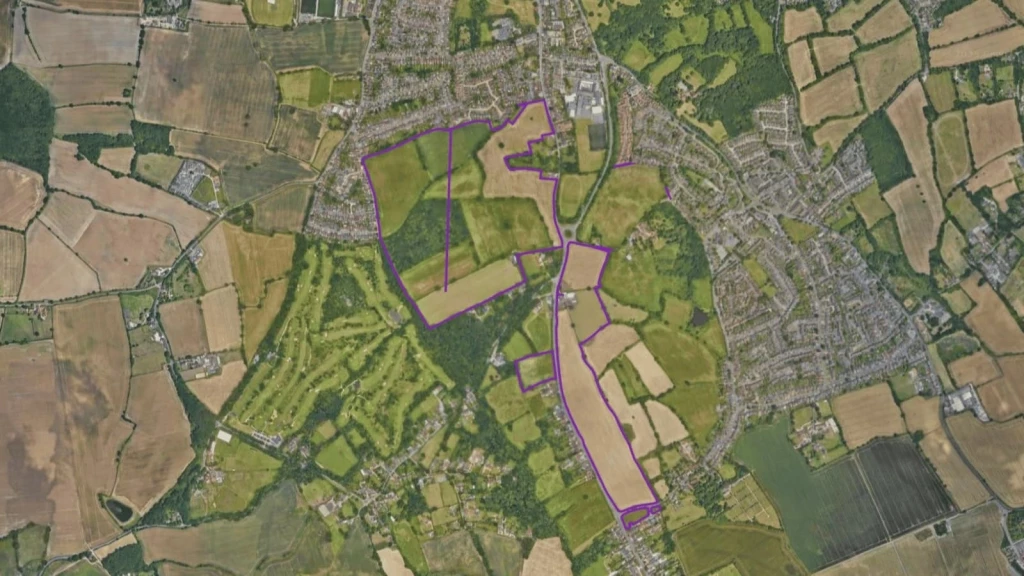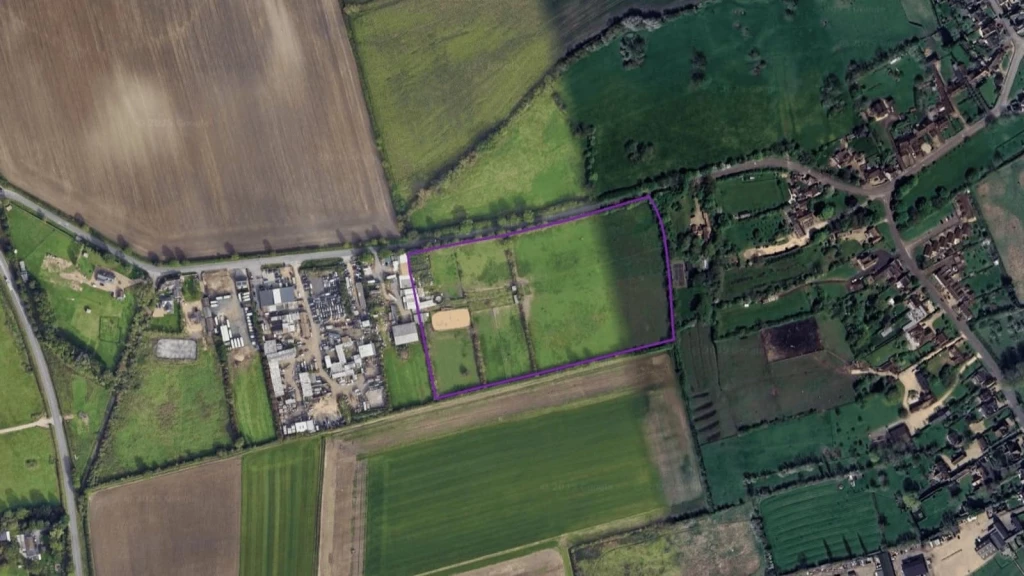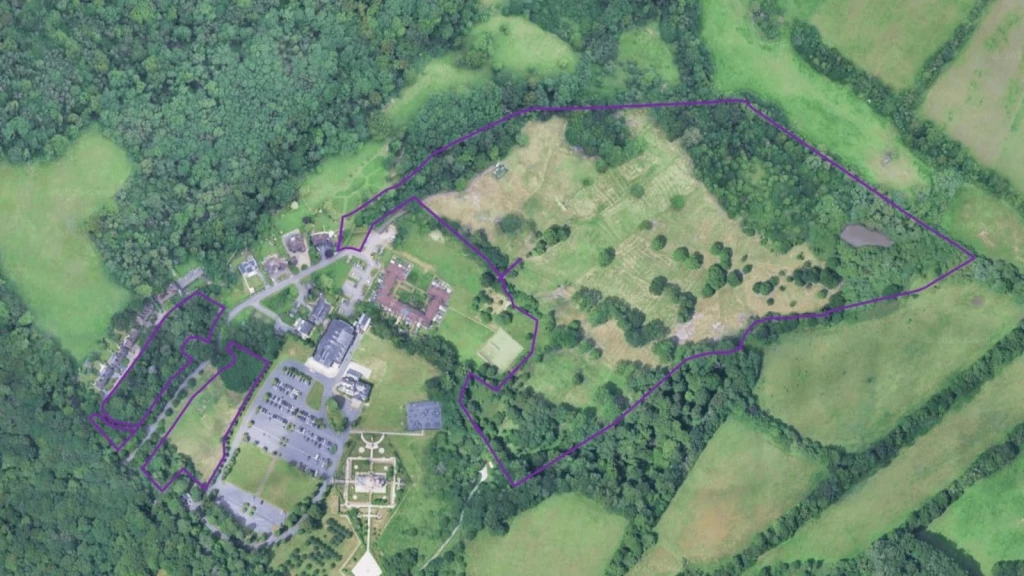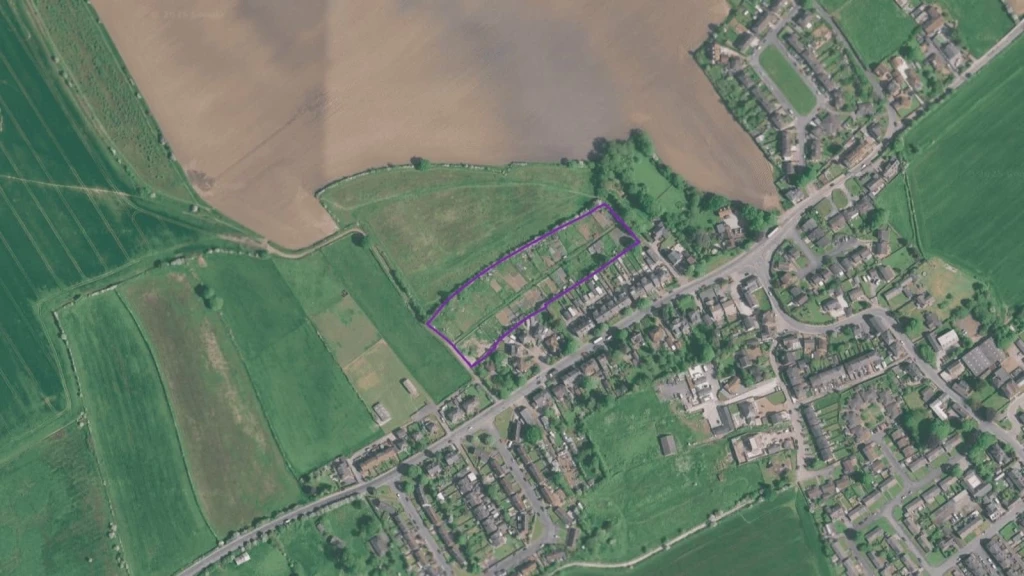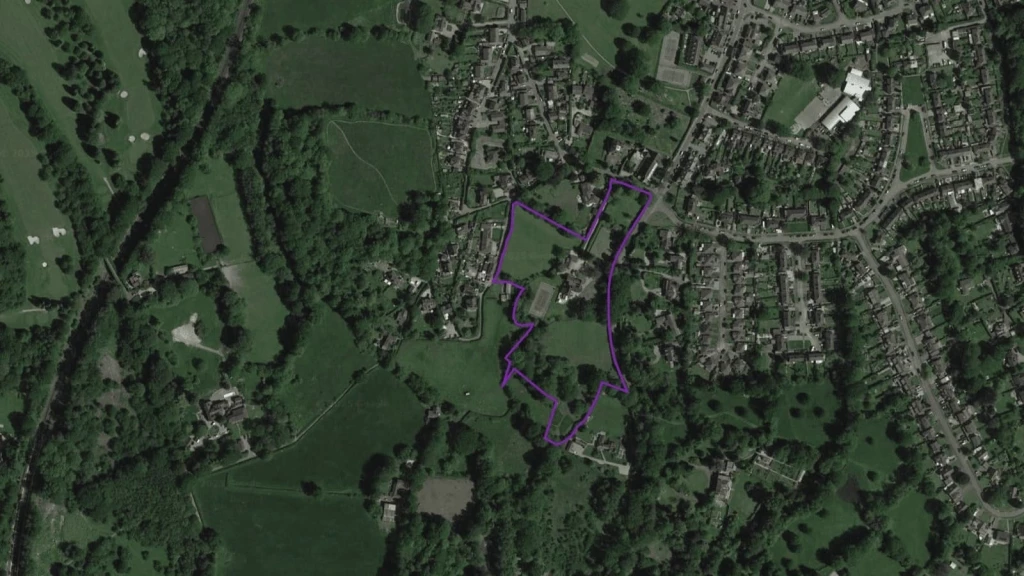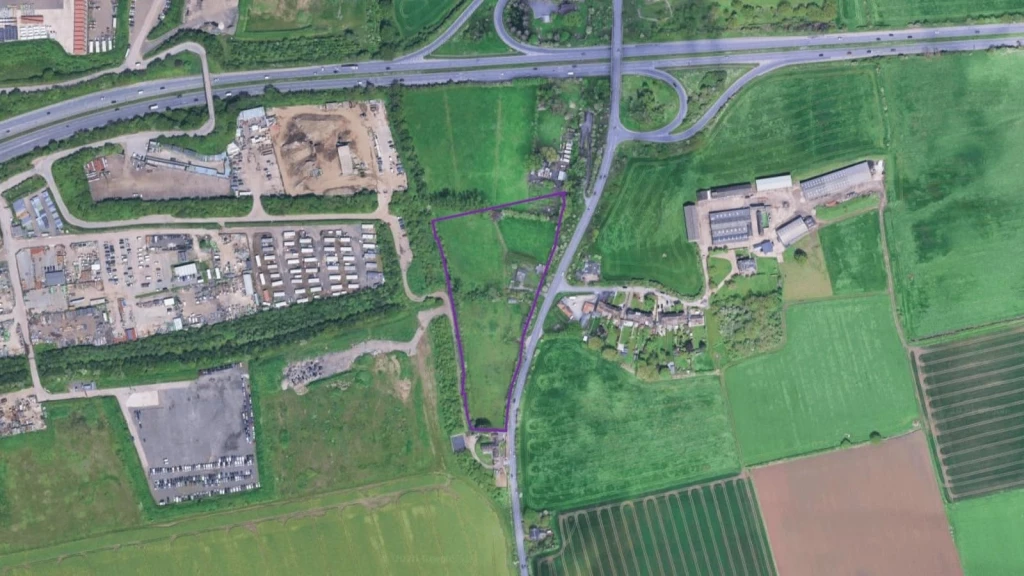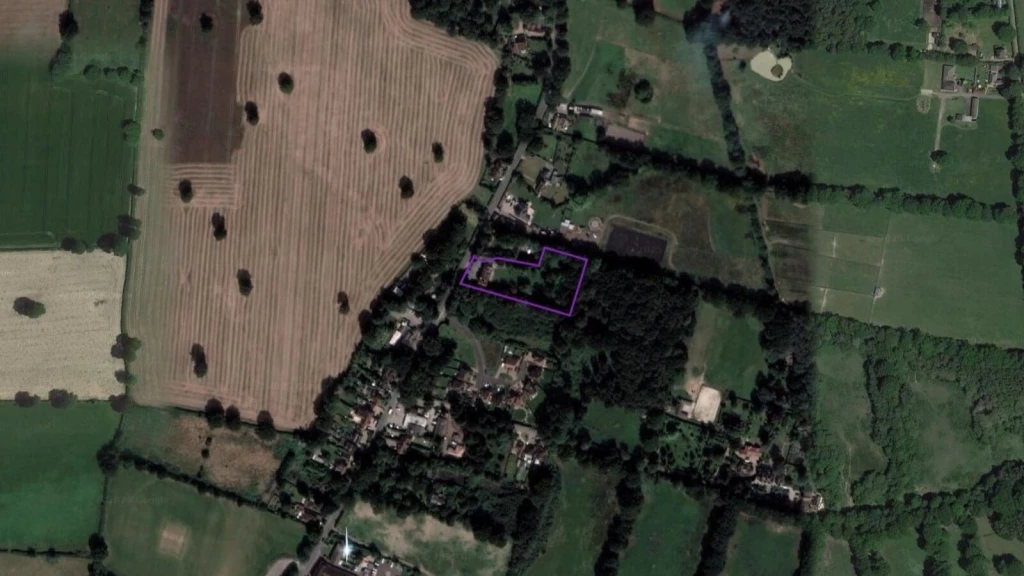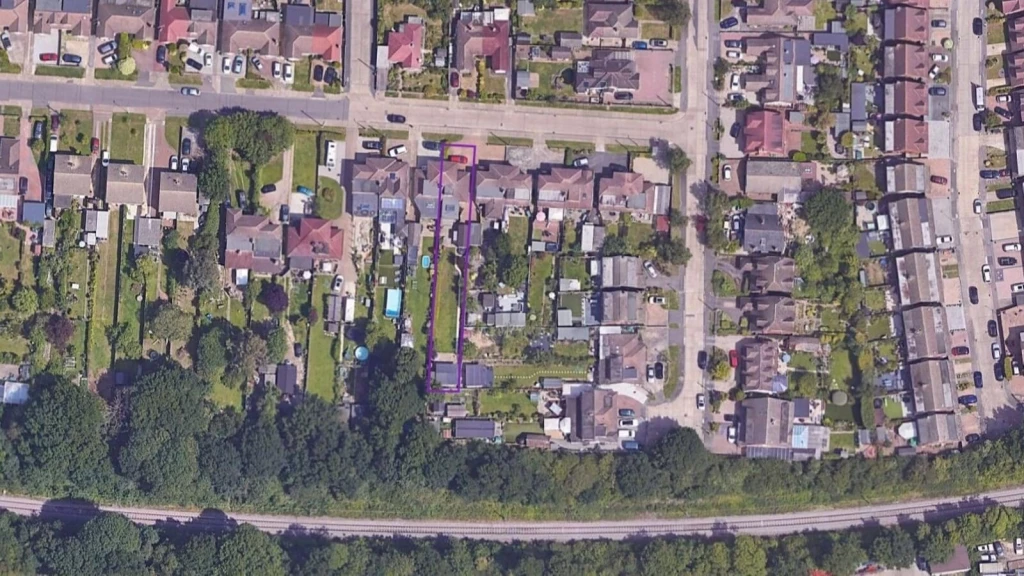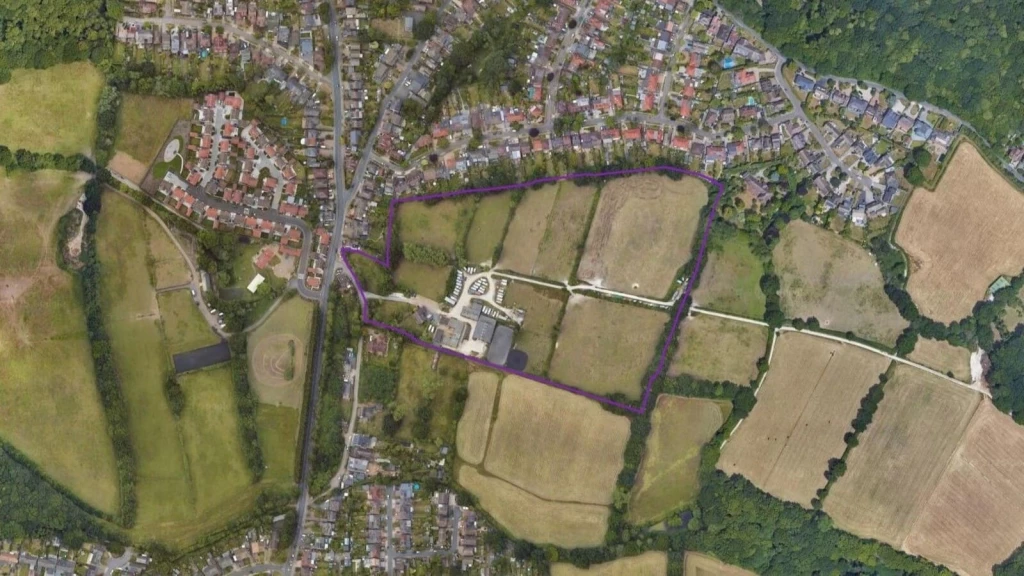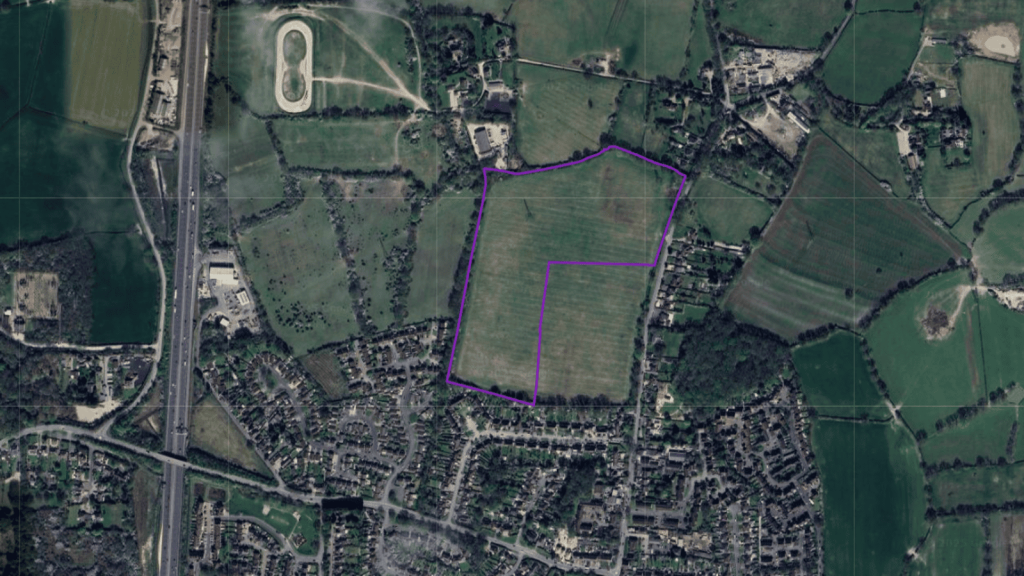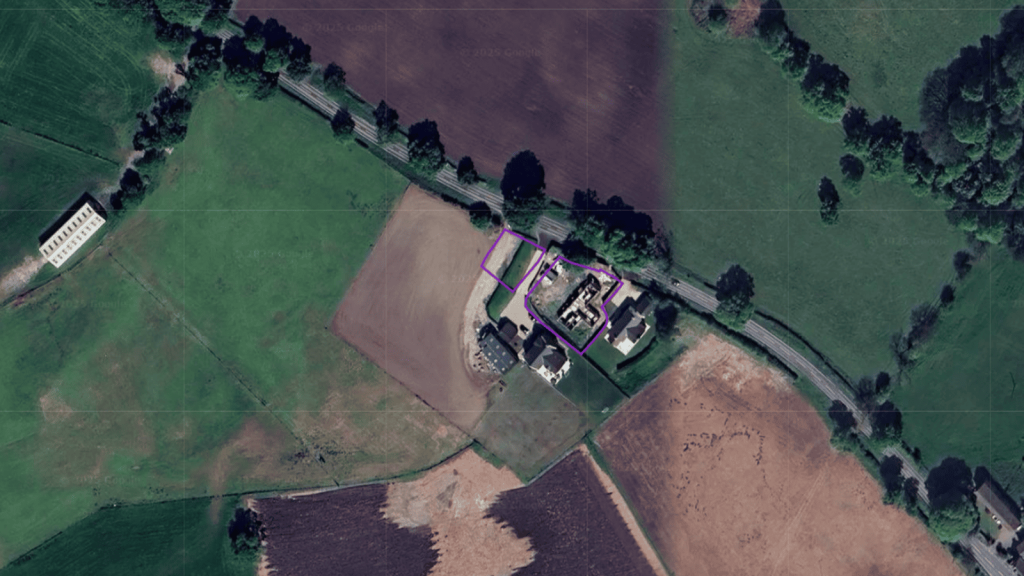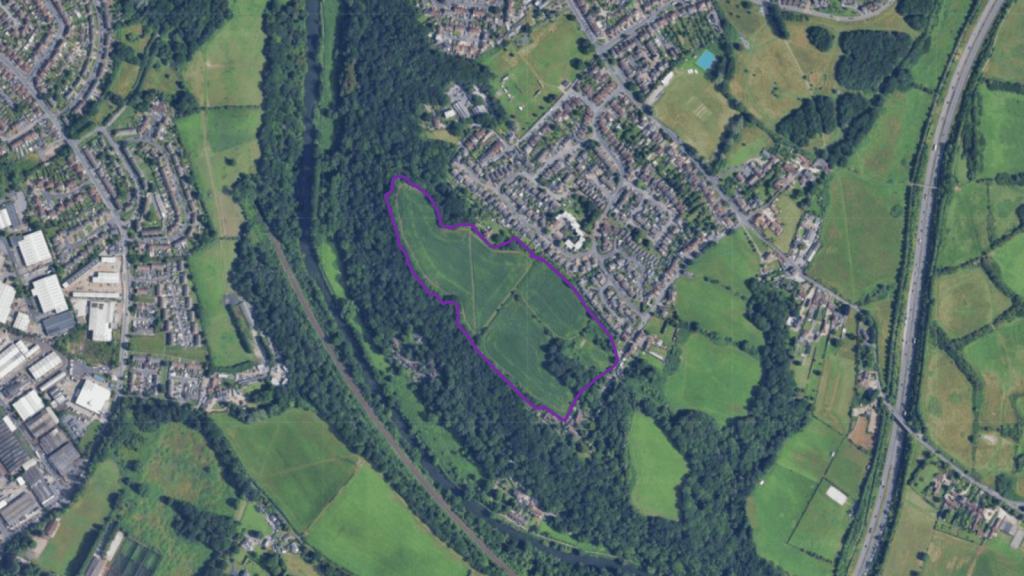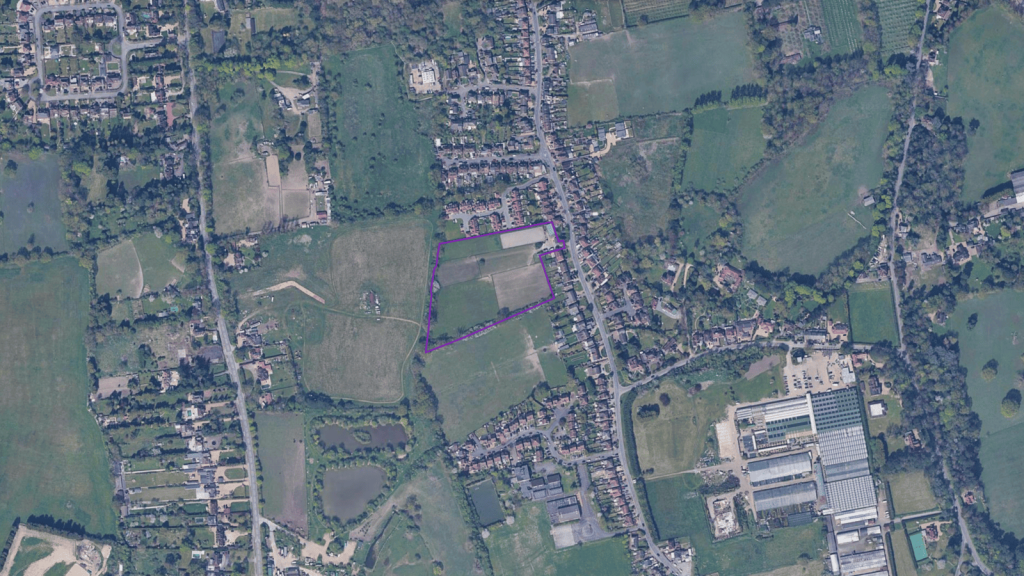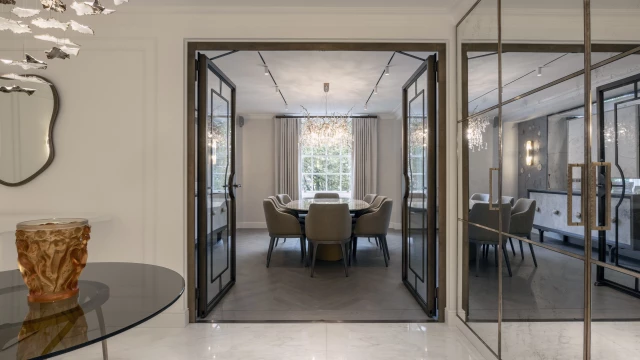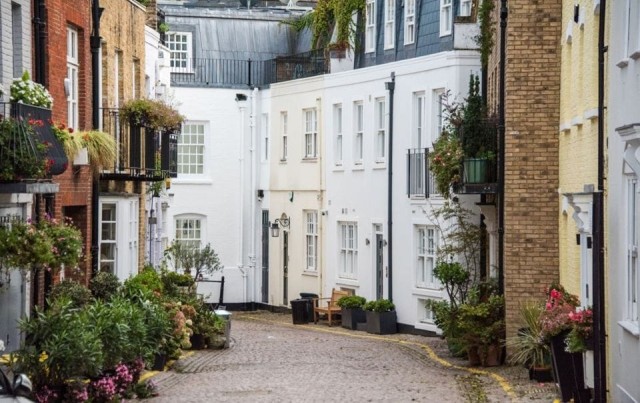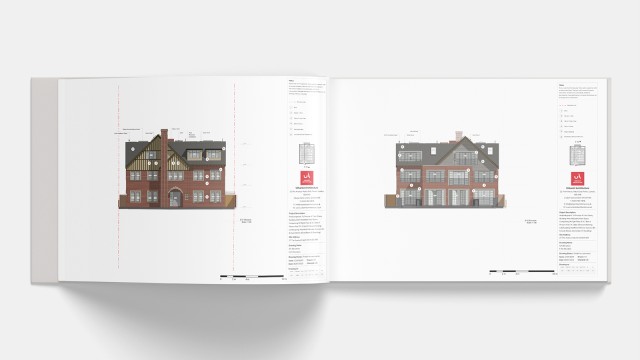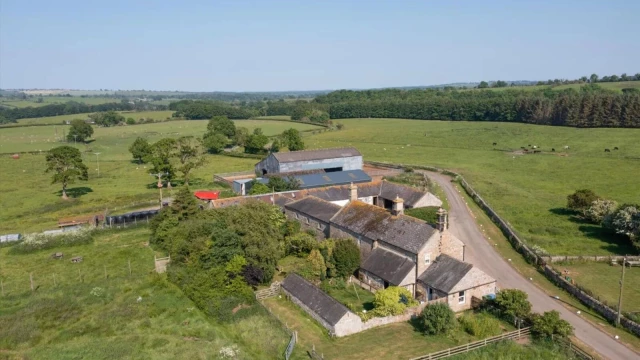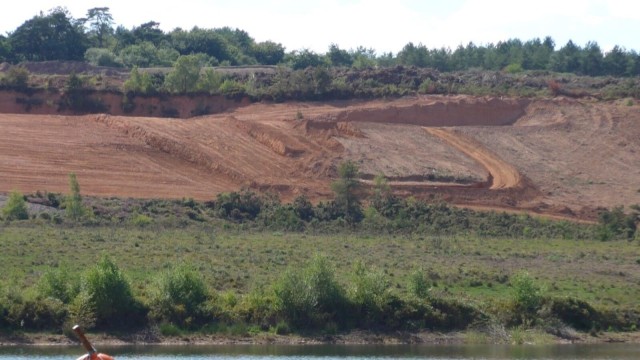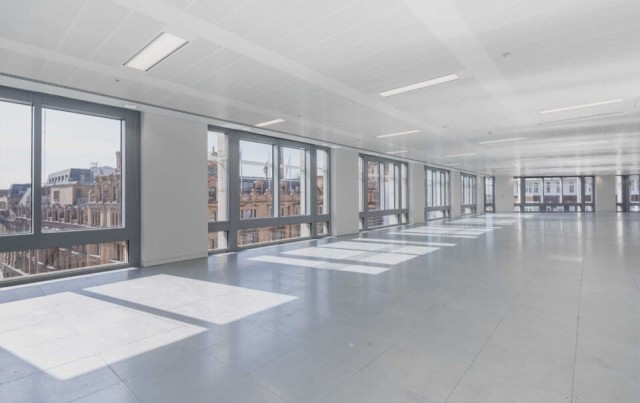For half a century, planning permission in the Green Belt was seen as nearly impossible.
Not anymore.
Since the Grey Belt policy was introduced in the December 2024 NPPF update, it has rapidly shifted the planning landscape - challenging long-held assumptions about what kinds of development are possible on land previously thought untouchable.
While its critics feared ambiguity or a loophole for unchecked growth, early appeal and planning decisions reveal a more nuanced reality.
In essence, Grey Belt designation is about more than just categorising underused land; it's about identifying previously developed or underutilised Green Belt areas that make only limited contributions to key Green Belt purposes.
Development in these areas moves from being "inappropriate" to potentially acceptable when four critical tests are satisfied: there's a demonstrable need for it, the location is sustainable, any harm remains limited, and the proposal complies with established Golden Rules.
From housing and renewable energy to data centres and traveller sites, inspectors are applying the Grey Belt policy with growing consistency - sometimes approving proposals once thought unthinkable, while still refusing others that fail to meet strict criteria.
This article explores a range of notable planning and appeal decisions that shed light on how the new Grey Belt framework is being interpreted in practice, highlighting the arguments that succeed, the ones that don’t, and the reasoning behind each outcome.
Drawing from 20+ real examples of both approved and refused Grey Belt proposals, it reveals how the policy is shifting expectations and reshaping opportunities for landowners, developers, and local authorities.
Find out which Grey Belt applications are winning approval and why others are being turned down.
1. Beaconsfield, Buckinghamshire - rejected development
- Location: Beaconsfield, Buckinghamshire
- Type of development: 120-home residential scheme
- Key planning considerations:
- Although enclosed by major roads, the site was found to contribute to preventing urban sprawl.
- The inspector determined that the site played a significant role in containing the spread of Beaconsfield.
- Despite acknowledging a "dismal" housing supply, the inspector concluded that this did not outweigh the harm to the Green Belt.
- Outcome: Appeal dismissed
- Key lesson: Even with a critically low housing supply, developments on Green Belt land may be refused if the site is deemed to play a strong role in fulfilling Green Belt purposes.
2. North-West Harpendeen, St Albans - approved development
- Location: North-West Harpenden, St Albans
- Type of development: 550-home residential scheme with community facilities
- Key planning considerations:
- The site was identified as Grey Belt under the updated NPPF 2024 criteria.
- The scheme included 420 residential units and 130 retirement homes, along with a nursery for up to 110 children, two junior sports pitches with a pavilion, communal parks, allotments, and play areas, ensuring a diverse mix of housing and community amenities to meet local needs. The planning committee voted 5-4 in favour of the development on February 17, 2025, granting outline planning permission despite receiving over 1,800 public objections. Approval was largely influenced by St Albans’ critically low housing land supply (0.9 years) and the outdated 1994 local plan, making refusal difficult to justify.
- Originally submitted in 2023, the scheme was updated to include social rented housing, increasing the affordable housing provision to 50% in line with the Golden Rules.
- Outcome: Planning permission granted
- Key lesson: When a site meets Grey Belt criteria and adheres to the Green Belt Golden Rules, it can secure approval even in areas facing significant opposition and low housing land supply.
3. Bagshot, Surrey Heath - approved development
- Location: Bagshot, Surrey Heath
- Type of development: 135-home residential scheme (50% affordable)
- Key planning considerations:
- Site classified as Grey Belt under the updated NPPF 2024.
- Council refused the application, but the inspector ruled in favour, applying the presumption in favour of sustainable development.
- Recognised as a village, not a town, under Green Belt purpose (b), meaning its role in preventing settlement merging was limited.
- No requirement to demonstrate 'very special circumstances' due to its Grey Belt designation.
- Outcome: Planning permission granted
- Key lesson: Grey Belt classification under the updated NPPF can remove the need for ‘very special circumstances,’ making approval more likely where sites meet sustainable development criteria.
4. Tonbridge and Malling, Kent - approved development
- Location: Tonbridge and Malling, Kent
- Type of development: 57 homes, children’s nursery, and pre-school
- Key planning considerations:
- The 6-acre site is enclosed on three sides by existing development, minimising its impact on the surrounding Green Belt.
- The development increased affordable housing from 40% to 50%, aligning with the Golden Rules for sustainable development.
- Situated in a sustainable location with a proven need for housing and community facilities, including a purpose-built nursery and pre-school.
- The developer increased affordable housing from 40% to 50%, aligning with national policy priorities.
- The Planning Inspectorate granted approval after Tonbridge and Malling Borough Council withdrew its objection following the policy changes in December 2024.
- The inspector determined that, since the site was enclosed on three sides by existing development, it did not significantly contribute to preventing urban sprawl or the merging of towns.
- Outcome: Planning permission granted
- Key lesson: Grey Belt sites that are well contained by existing development and adhere to the Golden Rules for affordable housing have a strong likelihood of approval.
5. Hertsmere, Hertfordshire - approved development
- Location: Hertsmere, Hertfordshire
- Type of development: AI data centre (Europe’s largest)
- Key planning considerations:
- The DC01UK proposal, initially submitted in September 2024, was assessed before Grey Belt policy was formally introduced but was later classified as Grey Belt under the updated NPPF 2024, allowing for development on previously developed land.
- Located on an 85-acre site, the scheme retains 54% as open green space and delivers a 10% biodiversity net gain.
- The Planning Inspectorate approved the project, citing its alignment with the government’s focus on investing in the AI sector and its role in advancing the UK’s position as an AI superpower.
- The council supported the plans, noting that the data centre would deliver local economic benefits and enhance digital infrastructure while maintaining Green Belt protections.
- The development includes a £2 million investment in local transport infrastructure, such as bus route upgrades and cycle hire expansions, and commits to a 10% net biodiversity gain by retaining over half of the 85-acre site as green, open space.
- Outcome: Planning permission granted
- Key lesson: The government has recognised data centres as essential for maintaining the UK’s competitive edge in AI and cloud computing, and this decision reinforces that Grey Belt land can accommodate strategic development beyond residential schemes, especially when they align with national strategic objectives and offer substantial local benefits. The Grey Belt designation is already increasing the number of data centres in the Green Belt, allowing for strategic infrastructure projects that align with national tech investment priorities while ensuring environmental enhancements.
6. Burcot, South Oxfordshire - approved development
- Location: Burcot, South Oxfordshire
- Type of development: 57-hectare solar farm
- Key planning considerations:
- Initially refused due to concerns over its impact on the Oxford Green Belt, the scheme was later reclassified as Grey Belt under the updated NPPF 2024.
- The Planning Inspectorate granted consent following an inquiry in February 2025, confirming that large-scale renewable energy projects can be suitable for Grey Belt land.
- The council withdrew its Green Belt objection after acknowledging that the site met paragraph 155 of the NPPF, making the development no longer "inappropriate."
- A statement of common ground between key parties confirmed the Grey Belt designation, which the inspector accepted, paving the way for approval.
- The site comprises 100% Best and Most Versatile (BMV) agricultural land, but the inspector concluded that solar panels would not prevent continued farming use and that the land could revert to agriculture once the development's lifespan ended.
- Outcome: Planning permission granted
- Key lesson: This decision sets a precedent for renewable energy projects on Grey Belt land, reinforcing that once a site qualifies under paragraph 155 of the NPPF, standard Green Belt constraints no longer apply.
7. Elmridge, Surrey - rejected development
- Location: Elmbridge, Surrey
- Type of development: Mixed-use scheme (housing, commercial, and waste recycling)
- Key planning considerations:
- The site was previously developed land, meeting the Grey Belt definition under the updated NPPF 2024.
- Despite partial enclosure by existing infrastructure, the inspector determined this was insufficient to justify development, as the site still played a role in preventing urban sprawl.
- Residents expressed concerns over increased traffic and environmental impacts, influencing the decision.
- Outcome: Appeal dismissed
- Key lesson: Meeting Grey Belt criteria does not guarantee approval; additional factors like site context, infrastructure adequacy, and community concerns are crucial in planning decisions.
8. Billericay, Basildon - approved development
- Location: Billericay, Basildon
- Type of development: 250-home residential scheme
- Key planning considerations:
- Council officers identified the site as Grey Belt under the updated NPPF 2024 criteria, acknowledging its potential for development.
- Basildon has a history of strong opposition to Green Belt releases, making this approval noteworthy.
- Officers recommended approval based on pressing housing needs and the site's alignment with local development constraints.
- Outcome: Planning permission granted
- Key lesson: Even in areas with strong Green Belt opposition, meeting Grey Belt criteria and demonstrating housing need can result in approval.
9. Leighton Buzzard, Central Bedfordshire - rejected development
- Location: Leighton Buzzard, Central Bedfordshire
- Type of development: Extra-care housing scheme comprising 99 extra-care units (including 30% affordable housing) and a 66-bed care home
- Key planning considerations:
- The site was acknowledged to meet Grey Belt criteria under the updated NPPF 2024, as it did not strongly contribute to Green Belt purposes.
- The proposed development included 30% affordable housing, falling short of the Golden Rules requirement of 50% for Grey Belt sites.
- While there was an evident need for extra-care housing, the inspector determined that the scheme did not deliver sufficient public benefits to outweigh the harm to the Green Belt.
- Lack of strong transport links and concerns over sustainability were also cited.
- Outcome: Appeal dismissed
- Key lesson: Grey Belt classification alone is insufficient for approval; developments must meet the Golden Rules for affordable housing, provide significant public benefits, and be located in a sustainable location with strong infrastructure and transport connections.
10. Northaw, Welwyn Hatfield - approved development
- Location: Northaw, Welwyn Hatfield
- Type of development: Extra care housing scheme with ancillary community facilities
- Key planning considerations:
- The 11.4-hectare site, previously used as greyhound kennels, was recognised as previously developed land and reclassified as Grey Belt under the updated NPPF 2024.
- The inspector concluded the scheme would not cause substantial harm to the openness of the Green Belt, due to its containment by woodland and the careful design restricting development to 23% of the site.
- Although the proposal failed to meet the 50% affordable housing requirement under the Golden Rules, offering only a 10% discount sale and £1m contribution, the inspector found this shortfall did not outweigh the scheme’s wider benefits.
- Those benefits included a projected 14.8–28% biodiversity net gain, enhanced woodland management, and a wheelchair-accessible on-demand electric vehicle service for residents.
- The inspector also determined that the proposal would not harm the setting of the nearby Grade II listed Hook House, nor adversely affect the surrounding landscape character.
- Outcome: Planning permission granted
- Key lesson: Grey Belt sites that qualify as previously developed land and deliver strategic community or specialist housing, with strong landscape containment and environmental gains, may be approved even where affordable housing provision falls short of the Golden Rules.
11. Brierley, Barnsley - approved development
- Location: Brierley, Barnsley
- Type of development: Gypsy/Traveller caravan site with day room and associated residential use
- Key planning considerations:
- The site was identified as Grey Belt under the updated NPPF 2024, as it did not strongly contribute to the Green Belt purposes.
- Although not previously developed land, it was enclosed by allotments and housing, and formed a small part of the wider Green Belt, meaning its development would not undermine the Green Belt’s overall function.
- The inspector found a demonstrable unmet need for Gypsy/Traveller pitches in Barnsley, with no progress on allocated sites and an outdated land supply assessment.
- The development was located next to the village and gave the family access to local services, making it a sustainable location.
- The site was well maintained, with limited visual impact and no harm to the character of the area or neighbours’ amenity.
- Although retrospective, the appeal was allowed with conditions securing landscaping, lighting, and biodiversity improvements.
- Outcome: Planning permission granted
- Key lesson: Traveller sites on Grey Belt land may be approved where there is unmet need, the site is small and sustainable, and the development causes no harm to the openness or character of the Green Belt.
12. Dormansland, Tonridge - approved development
- Location: Dormansland, Tandridge
- Type of development: Four semi-detached dwellings
- Key planning considerations:
- The site was classified as Grey Belt under the updated NPPF 2024, as it did not strongly contribute to any of the Green Belt purposes.
- Surrounded by housing, a village church and other development, the site was found to be well contained and played no meaningful role in checking urban sprawl, preventing settlement merging, or preserving historic character.
- The inspector concluded that development would not fundamentally undermine the wider Green Belt and met the requirements of paragraph 155 of the NPPF.
- Tandridge’s shortfall in housing land supply—at just 1.92 years—demonstrated a clear unmet need for new homes, adding weight in favour of the scheme.
- Although located in a rural area, the site offered good access to public transport, including nearby railway stations and local bus services, and was considered to be in a sustainable location.
- The proposal included EV charging points, cycle storage and a pedestrian link to improve connectivity, and the inspector concluded it would not harm local character or highway safety.
- Outcome: Planning permission granted
- Key lesson: Grey Belt sites that are enclosed by existing development and located near transport links are likely to succeed where housing need is high and the proposal meets the criteria of paragraph 155.
13. Navestock, Brentwood - approved development
- Location: Navestock, Brentwood
- Type of development: Six-pitch Gypsy/Traveller site with day rooms and hardstanding
- Key planning considerations:
- The site was designated Grey Belt under the updated NPPF 2024, as it made only a limited contribution to Green Belt purposes.
- The inspector emphasised that Grey Belt assessments should be made at a site-specific level, rather than relying solely on parcel-based strategic reviews.
- As a small, contained site between two existing traveller sites, the proposal was not considered inappropriate under paragraph 155.
- There was a clear unmet need for Gypsy/Traveller pitches in Brentwood and no alternative sites available.
- The inspector also noted the proposal would not harm openness or local character, and that the Golden Rules do not apply to this type of development.
- Outcome: Planning permission granted
- Key lesson: Traveller sites may be approved on Grey Belt land where they meet paragraph 155, especially if they are small, contained, and respond to a clear local need.
14. Copthorne, Tandridge - approved development
- Location: Copthorne, Tandridge
- Type of development: Two detached dwellings with a garage
- Key planning considerations:
- The appeal site was confirmed as Grey Belt under the updated NPPF 2024, as it did not strongly contribute to Green Belt purposes (a), (b), or (d).
- The inspector concluded that, while the proposal would result in a small loss of openness, it would not fundamentally undermine the purposes of the remaining Green Belt.
- Tandridge’s housing land supply stood at just 1.92 years, demonstrating a clear unmet need.
- The site was considered to be in a sustainable location, with good access to nearby settlements despite limited footpath links.
- As a minor development, the scheme was not subject to the Golden Rules, and the inspector gave reduced weight to pre-framework local policies that didn’t account for Grey Belt.
- Outcome: Planning permission granted
- Key lesson: Small-scale residential developments on Grey Belt land may be approved where they meet paragraph 155 of the NPPF, particularly when housing need is high and the Golden Rules do not apply.
15. Wickford, Basildon - approved development
- Location: Wickford, Basildon
- Type of development: Single bungalow (retrospective application)
- Key planning considerations:
- The site was recognised as Grey Belt under the 2024 Written Ministerial Statement and draft NPPF, due to its limited contribution to Green Belt purposes and lack of aesthetic or environmental value.
- Although the application was retrospective and not previously developed land, the inspector considered the site to be part of a settlement-edge plotlands area, enclosed by other development and in a sustainable location near Wickford.
- Basildon’s 2.34-year housing land supply was well below the required five years, and the inspector gave significant weight to the national policy direction encouraging the early release of Grey Belt land.
- The scheme was not found to cause significant harm to openness, and mitigation payments had already been made to offset potential impact on the Blackwater Estuary SPA and Ramsar site.
- Outcome: Planning permission granted (enforcement notice quashed)
- Key lesson: This case illustrates how Grey Belt status may support approval even ahead of formal policy adoption, particularly for small-scale housing in sustainable locations within authorities facing acute housing shortages.
16. Daws Heath, Castle Point - approved development
- Location: Daws Heath, Castle Point
- Type of development: 173-home residential scheme
- Key planning considerations:
- The inspector followed what is fast becoming a textbook approach to Grey Belt appeals, first confirming there was common ground that the site would not undermine the wider Green Belt, that there was a demonstrable unmet housing need (with housing land supply at just 0.55–0.69 years), that the location was sustainable, and that the scheme met the Golden Rules, including the delivery of 50% affordable housing.
- The crucial issue was whether Daws Heath should be considered a town or a village. The inspector acknowledged a lack of consensus in the evidence, but concluded that it is a village. This meant Green Belt purposes (a), (b) and (d) did not apply, per the updated PPG.
- The site was therefore found to meet the definition of Grey Belt, and the proposal was not considered inappropriate development in the Green Belt under paragraph 155 of the NPPF.
- As the development complied with national and local policy, the tilted balance was not triggered—the inspector approved the scheme on the basis that it met the policy framework directly.
- Ecology, highways, and infrastructure concerns were addressed via conditions and planning obligations secured through the S106 agreement.
- Outcome: Planning permission granted
- Key lesson: Inspectors are consistently applying the Grey Belt policy framework. Where a site clearly satisfies the criteria - particularly adjoining a village, delivering affordable housing, and addressing local need - it can be approved without resorting to the tilted balance, even in Green Belt locations.
17. Holyport, Windsor and Maidenhead - appeal dismissed
- Location: Land north and south of Gays Lane, Holyport, Berkshire
- Type of development: Major film and TV studio complex (outline application)
- Key planning considerations:
- Green Belt impact: The proposed development was located within the Metropolitan Green Belt. The inspector and Secretary of State concluded that the scheme constituted inappropriate development, which is, by definition, harmful to the Green Belt.
- Very special circumstances: The appellant argued that the economic benefits of the film studio, including job creation and contributions to the creative industry, amounted to very special circumstances. However, both the inspector and Secretary of State found that these benefits did not clearly outweigh the harm to the Green Belt and other identified harms.
- Landscape and visual effects: The development was found to cause significant harm to the character and appearance of the area, including the setting of the nearby Holyport Conservation Area.
- Flood risk: Concerns were raised about the potential increase in flood risk due to the scale of the development and its location.
- Public opposition: The proposal faced substantial public opposition, with nearly 400 objections submitted. Local residents and the Bray Parish Council expressed concerns about the impact on the Green Belt, local infrastructure, and the character of the village.
- Outcome: Appeal dismissed; planning permission refused by the Secretary of State.
- Key lesson: This case highlights the stringent requirements for demonstrating very special circumstances to justify inappropriate development in the Green Belt. Even though this land was ultimately considered to be Grey Belt, it wasn’t enough to get the project over the line. Economic benefits alone, without clear and compelling evidence that they outweigh the harm to the Green Belt and other planning harms, are unlikely to suffice.
18. Smallfield, Tandridge - appeal allowed
- Location: Land west of Chapel Road, Smallfield, Surrey RH6 9JH
- Type of development: Residential development (outline application for up to 270 dwellings)
- Key planning considerations:
- Green Belt classification: The site is within the Green Belt, but the inspector found it qualifies as Grey Belt as it was found to not strongly contribute to Green Belt purposes (a), (b), or (d). The conclusion that Smallfield is a village - and not a “large built-up area” - was central in determining that the proposal was not inappropriate development in the Green Belt.
- Housing need and policy compliance: With a housing land supply of only 1.92 years and housing delivery at just 42% of requirements, there was an acknowledged and acute housing shortfall in Tandridge. The proposal met the ‘Golden Rules’ under paragraph 156 of the Framework, including a provision of 49% affordable housing, public green space, and local infrastructure improvements.
- Landscape and visual effects: The development would cause major adverse visual effects for users of Chapel Road, as well as nearby residents. However, landscape harm was considered localised and capable of mitigation through good design, planting, and layout reserved matters.
- Flood risk and infrastructure: While flood concerns were raised locally, the site itself is low-risk. Moreover, the scheme included flood alleviation works designed to divert surface water and reduce flood impact elsewhere in Smallfield - a benefit to which the inspector gave significant weight.
- Primary school land offer: Land for a potential relocation of Burstow Primary School was offered via the S106 agreement. While funding uncertainty meant the delivery of a new school couldn’t be guaranteed, the provision of land alone was considered a moderate benefit.
- Outcome: Appeal allowed; outline planning permission granted subject to conditions and S106 obligations.
- Key lesson: This case demonstrates the growing weight of Grey Belt policy under the revised NPPF. In high-pressure housing contexts, even visually sensitive Green Belt-adjacent land can be released if it qualifies as Grey Belt and meets the new Golden Rules. Importantly, substantial affordable housing provision, sustainable location, and tangible local benefits tipped the planning balance - despite acknowledged visual harm and local opposition.
19. Over Alderley, Cheshire East - approved development
- Location: Broadheath Farm, Over Alderley, Macclesfield, Cheshire
- Type of development: Two dwellings (rebuilds – one farmhouse, one former barn)
- Key planning considerations:
- Grey Belt classification: The site was identified as Grey Belt land under the December 2024 NPPF. While still part of the Green Belt, the inspector noted that the site did not strongly contribute to Green Belt purposes, such as preventing urban sprawl or preserving the setting of historic towns.
- Green Belt policy compliance: The inspector concluded the scheme met all four criteria in paragraph 155 of the revised Framework for development on Grey Belt land:
- It would not fundamentally undermine Green Belt purposes across the plan area.
- There was a demonstrable unmet housing need, with Cheshire East unable to demonstrate a five-year housing land supply.
- The site was in a sustainable rural location, reasonably close to services in Macclesfield, Prestbury, and Alderley Edge.
- The proposal was not major development, so additional “Golden Rules” provisions didn’t apply.
- Transport and accessibility: Although pedestrian and public transport access was limited, the inspector considered the location sufficiently sustainable given nearby settlements, cycle routes, and short car journey distances.
- Openness and character: The inspector clarified that openness is not a determining factor in assessing Grey Belt appropriateness under paragraph 155. However, landscape and ecological mitigation conditions were imposed to manage visual and environmental impact.
- Outcome: Appeal allowed; planning permission granted for two dwellings.
- Key lesson: This case shows how a small-scale residential scheme on Grey Belt land - when well located and in an authority with housing undersupply - can be approved under the revised NPPF, even without strong walking/public transport links, provided other criteria are met.
20. Hanham, South Gloucestershire – approved development
- Location: Land south of Hencliffe Way and west of Castle Farm Road, Hanham
- Type of development: Up to 140 dwellings (outline application, including demolition of 1 existing dwelling)
- Key planning considerations:
- Grey Belt designation: The site was confirmed as Grey Belt under the December 2024 NPPF, as it made only a moderate contribution to Green Belt purpose (a), and limited or no contribution to purposes (b) and (d). This classification allowed it to be assessed under the more flexible Paragraph 155 criteria for residential development in Grey Belt land.
- Compliance with Paragraph 155: The inspector found the proposal met all four criteria for development in the Grey Belt:
- The scheme would not fundamentally undermine the Green Belt's purposes overall.
- There was a demonstrable need for housing - South Gloucestershire had a shortfall (only 3.87–4.38 years supply).
- The site was in a sustainable location, with proximity to Hanham services and proposed improvements to pedestrian and public transport access.
- It fulfilled the ‘Golden Rules’, including 50% affordable housing, biodiversity net gain, public open space, and infrastructure contributions.
- Landscape and visual impact: While the development would urbanise rural land and affect the character of public footpaths, the impact was considered localised and mitigated by substantial landscape buffers, woodland edges, and high-quality green infrastructure.
- Effect on neighbouring properties: Concerns were raised about the new access road between Nos. 62 and 66 Hencliffe Way. However, the inspector found that with mitigation (screening, fencing, road separation), the living conditions would not be unacceptably harmed.
- Heritage impact: There was less than substantial harm to the setting of nearby listed buildings (e.g., West Hanham House), but this was outweighed by the scheme’s significant public benefits.
- Outcome: Planning permission granted (appeal allowed)
- Key lesson: This case shows how Grey Belt status, combined with clear local housing need and comprehensive mitigation, can support approval for substantial housing schemes. It also confirms that Paragraph 155 of the NPPF provides a viable route to deliver sustainable development in the Green Belt - when its criteria are fully satisfied.
21. Iver, Buckinghamshire – approved development
- Location: Land Adjacent to 148 Swallow Street, Iver, Buckinghamshire
- Type of development: 43-home residential scheme (outline application)
- Key planning considerations:
- Site located within the Metropolitan Green Belt but deemed 'Grey Belt' under paragraph 155 of the 2024 NPPF, making it eligible for development under certain criteria.
- The site was assessed as not strongly contributing to key Green Belt purposes (A, B, or D).
- The council’s housing land supply is critically low (0.91 years), establishing a clear unmet need for housing.
- The scheme includes 50% affordable housing (22 units), with a mix of social rent and shared ownership units secured through a Section 106 agreement.
- Located in a sustainable location, with good access to public transport, schools, shops, and community services.
- Meets all four 'Golden Rules' in the NPPF for development in Grey Belt areas:
- (a) Affordable housing provision
- (b) Infrastructure contributions (including £40,590 to health care)
- (c) On-site open space and play area (0.39 ha including a LAP)
- (d) Net biodiversity gain (minimum 10%)
- Highways officers supported the scheme, with safe vehicle access, pedestrian footways, and a new crossing on Swallow Street.
- No objections from key consultees on ecology, flooding, drainage, design, or residential amenity grounds.
- Outcome: Approved at South Area Planning Committee on 15 July 2025, subject to finalisation of a Section 106 agreement.
- Key lesson: This case illustrates how Grey Belt policy can unlock residential development on Green Belt land - if the site is sustainably located and delivers high levels of affordable housing, infrastructure, and environmental benefits in line with the NPPF's criteria.
22. Higher Rads End, Eversholt, Central Bedfordshire - refused development
- Location: Higher Rads End, Eversholt, Central Bedfordshire
- Type of development: Erection of two detached two-storey dwellings
- Key planning considerations:
- The site lies within the Green Belt but was accepted as ‘Grey Belt’ under the revised 2024 NPPF, as it did not strongly contribute to Green Belt purposes (a), (b), or (d) in Paragraph 143.
- The inspector concluded that the proposal met the criteria in paragraph 155 of the Framework, including demonstrable housing need, a sustainable location, and limited impact on Green Belt objectives.
- Nonetheless, the proposal did not qualify as "limited infilling in a village" under Paragraph 154(e):
- Higher Rads End lacked the services, character, and built-up form to be considered a village.
- The appeal site was visually open and read as part of the countryside rather than a built-up frontage.
- The council lacked a 5-year housing land supply, and three recent appeal decisions had confirmed the shortfall - strengthening the case for development in principle.
- Design and landscape impact were decisive in the refusal:
- The proposed dwellings were two-storey, large in scale, and introduced a sprawling, urban character out of keeping with the modest, low-rise rural context.
- The dwellings would breach a currently unbroken hedgerow and sit on slightly raised ground, compounding their visual prominence.
- The development conflicted with both local plan policies (HQ1, EE4, EE5) and national design principles in Sections 12 and 15 of the NPPF.
- While the scheme offered a 10% biodiversity net gain, accessible design, and some economic and social benefits, these were given limited to moderate weight due to the small scale and standard regulatory compliance.
- Outcome: Appeal dismissed
- Key lesson: Grey Belt status and housing need may open the door to development, but do not override poor design or landscape harm. Even sustainable rural schemes must demonstrate contextual sensitivity, scale appropriateness, and high-quality design to gain approval.
23. Land west of Leighton Buzzard Road, Hemel Hempstead - approved development
- Location: Hemel Hempstead, Hertfordshire
- Type of development: Mixed residential development comprising up to 390 homes (including 50% affordable and 5% self-build) and a 70-bed residential care home, with landscaping, open space, and new access.
- Key planning considerations:
- The site lies within the Green Belt but was assessed as “Grey Belt” under the updated NPPF 2024, not strongly contributing to purposes (a), (b), or (d), thus not requiring demonstration of very special circumstances.
- The inspector applied the “tilted balance” under NPPF paragraph 11(d)(ii), due to the authority's chronic housing land shortfall (1.03 years, with a deficit of 6,457 dwellings).
- Flood risk was raised but the sequential test was not determinative; the inspector accepted mitigation could be secured via conditions.
- Significant landscape and heritage concerns were found to result in only “very low level” harm, which was outweighed by the scheme’s public benefits.
- Over 50% of the site would be retained as green infrastructure, supporting biodiversity net gain.
- Partial costs were awarded against both Dacorum Borough Council and Hertfordshire County Council.
- Outcome: Appeal allowed
- Key lesson: This case reinforces the importance of a clear and policy-aligned interpretation of “Grey Belt” under the revised NPPF and PPG. It also confirms that moderate flood risk concerns and minor heritage harm will not override the tilted balance where acute housing needs and well-mitigated design weigh heavily in favour.
24. Land adjacent to 148 Swallow Street, Iver - outline approval subject to S106
- Location: Land adjacent to 148 Swallow Street, Iver, Buckinghamshire
- Type of development: Outline application for demolition of existing structures and erection of up to 43 dwellings with associated infrastructure and landscaping (access only considered at this stage)
- Key planning considerations:
- Site lies within the Metropolitan Green Belt but meets NPPF 2024 Grey Belt definition, with limited contribution to key Green Belt purposes (A, B, and D).
- Buckinghamshire Council’s housing land supply is just 0.91 years, far below the 5-year requirement, engaging the NPPF presumption in favour of sustainable development.
- Proposal delivers 50% affordable housing (22 units: 15 social rent, 7 shared ownership) in line with NPPF Golden Rules.
- On-site open space provision meets Golden Rules standards, including a Local Area of Play and a total of 0.39ha green space.
- Financial contributions agreed for local healthcare (£40,590) and air quality mitigation within the Iver Air Quality Management Area.
- Location considered sustainable – walking/cycling distance to Iver Heath and Iver Village amenities, close to bus stops with links to Langley, Slough, and Uxbridge.
- No unacceptable impacts identified on highways, flooding, ecology, landscape, or residential amenity; layout, scale, and design to be addressed at reserved matters stage.
- Application called in by ward councillors and parish council, but officer recommendation was for approval subject to S106 completion.
- Outcome: Conditional outline planning permission to be granted, subject to completion of a Section 106 agreement securing affordable housing, open space, and financial contributions to healthcare and air quality measures. This is the first time Buckinghamshire members have approved a major application via the Grey Belt policy on a greenfield site.
- Key lesson: Even in Green Belt locations, sites meeting Grey Belt criteria and delivering full compliance with the NPPF “Golden Rules” can gain approval - particularly where housing land supply is critically low and impacts are judged acceptable in principle.
What these Grey Belt planning and appeal decisions mean
The introduction of the Grey Belt has already reshaped how land that doesn’t convincingly meet the purposes of the Green Belt is being reconsidered - and what types of development can realistically proceed.
These early decisions demonstrate that the policy is not a carte blanche for development, but rather a recalibration of long-standing Green Belt constraints.
Sites still need to prove they meet national and local policy requirements, deliver public benefits, and align with sustainable planning principles. But for the first time in decades, there is now a clear policy route to unlock constrained land that no longer serves Green Belt purposes.
The shift in tone is also political. Even longstanding defenders of Green Belt protections - such as London Mayor Sadiq Khan - have recognised the urgent need for change.
In a major policy shift, Khan announced in early 2025 that City Hall would actively explore the release of parts of London’s Green Belt to address the housing crisis.
“We clearly face an extraordinary challenge… We have to be honest with Londoners that [brownfield alone] will not be enough to meet our needs.”
This evolving stance signals a wider national acceptance that the status quo is no longer sustainable.
The Grey Belt policy is not only guiding planning decisions - it is helping reframe the national conversation about how to balance growth, sustainability, and land protection in the years ahead.
How Urbanist Architecture can help you with your Green Belt project
At Urbanist Architecture, we’ve spent years helping clients navigate the complexities of Green Belt planning policy. Our track record includes successful applications and appeals for a wide range of developments.
With the introduction of the Grey Belt policy, we’re already helping clients seize new opportunities made possible by this evolving framework. As Green Belt specialists, we understand the nuances of how planning officers and planning inspectors are interpreting the updated NPPF - and how to build compelling, policy-compliant cases that reflect both local and national priorities. In fact, we’ve even developed our own Grey Belt assessment tool, which we encourage you to utilise to see how likely it is that our land would qualify for development under this new policy.
We are also the authors of Green Light to Green Belt Developments, a widely researched resource for applicants, planners, and policymakers. A fully updated edition reflecting the new Grey Belt policy is coming soon - ensuring that our clients and readers stay at the forefront of planning reform.
If you're evaluating Green Belt or Grey Belt land for development, the present policy climate offers significant opportunities. The window for strategic advantage is open now - whilst many are still catching up with policy changes, early movers are already positioning themselves for success.

